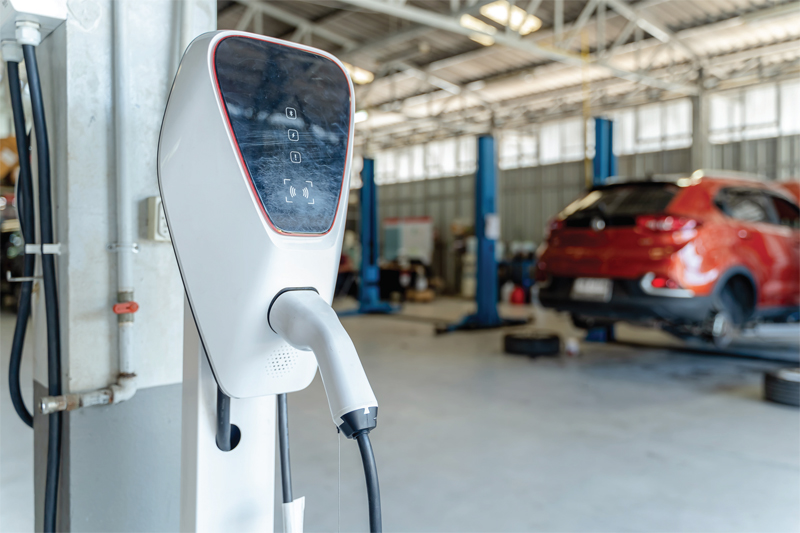
2030 is the latest deadline set by the government for the end to sales of new cars with internal combustion engines, but what does this mean for the aftermarket? Neil Pattemore assesses the situation.
As everyone is aware, the UK Government has announced that the sale of new cars that use internal combustion engines will no longer be legal from 2030. The Prime Minister wants to ‘kick start’ the ability of the UK to be ‘carbon neutral’ by 2050. However, it will also use the less stringent date of 2035 to end the sale of hybrid cars. Electric car sales may be rising, but they are still below 7% of all new car sales in the UK (at time of writing: December 2020), so there is a long way to go in less than nine years in order to enable all new vehicle sales to be electrically powered – for the automotive industry, the national grid infrastructure, and the motoring public.
How realistic is this?
The adoption of electric vehicles has been driven by political expediency, but there are significant issues with the full ‘cradle to grave’ impact of electric vehicles. Here are just a few aspects that need considering: the environmental and societal issues of mining the lithium and cobalt (e.g. the use of child labour), manufacturing the batteries with the associated hazardous by-products, the ability to generate and distribute the electricity, and the end-of-life recycling of the batteries.
The problem of generating the electricity is not yet resolved, as existing power stations need to be replaced with wind farms, solar panels or additional nuclear power stations – all of which create their own environmental issues.
Even more problematic is the requirement to have the (expensive) infrastructure to distribute the electricity to the places where electric vehicles need recharging. Private houses with a drive will still require substantial local sub-stations and appropriate power cable connections, but the real problem will be the many drivers who can only park on the street, or in car parks adjacent to apartment buildings. Motorway service stations will need to be able to charge hundreds of vehicles at the same time, which will not only create a power supply challenge, but fast charging of the vehicle battery can be detrimental to its long term performance (although Gridserve has opened the first EV-only service area in Essex that can simultaneously charge up to 36 vehicles, but this is not a main motorway service area).
Clearly, there are many challenges to be resolved in the next nine years – many of which will be very expensive. So, what are the likely key issues for the aftermarket when electric vehicles become the ‘new norm’?
There are likely to be three key aspects – the change of technology, the change to servicing the vehicle, and the change of vehicle ownership models.
Where does this leave the aftermarket?
There are the obvious dangers concerning the high voltages of the batteries, which will require investment in new workshop tools and equipment – none of which should be particularly problematic. However, the technical training for the workshop technicians may create a capacity issue for the training providers. The servicing requirements for electric vehicles will be much reduced, but there is likely to be an increased number of hybrid vehicles (with their internal combustion engines) as the reality of the practicalities of moving to 100% electric vehicles by 2030 becomes increasingly apparent.
The biggest threat may be the developing issue of who owns the vehicle. The increasing trend of personal leasing contracts is likely to be exacerbated by the higher cost of electric vehicles, as these personal leasing contracts may help avoid the full impact of the capital cost of ‘mobility as a service’. This creates a double issue. Firstly, your customer is increasingly likely to be a corporate fleet operator – so you may need to become part of a wider syndicate of independent garages, who can jointly ‘pitch’ for this corporate fleet business. But secondly, these corporate customers will drive down prices to be competitive in their own mobility services sector, so independent workshop efficiency becomes paramount to remaining competitive in this changing market.
Additionally, the way that vehicles are supplied through authorised dealers is likely to change, as direct sales from the vehicle manufacturers to mobility service providers develop. As this happens, the authorised dealers are more likely to become service and repair points, and this is where the difference between authorised and independent repairers becomes more blurred. Both types of workshop will need similar levels of competence and will directly compete for these service and maintenance opportunities.
This brings in another change for the independent workshop, where there will be an increasing need to have coordinated business management data reporting to the mobility service providers to allow them to work efficiently with the workshops they are dealing with (e.g. financial and process management systems). Today, this is already ‘the norm’ for authorised repairers.
The adoption of electric vehicles will bring significant changes on a number of levels and will also bring significant new challenges – some of which may also require new requirements for the business models of independent workshops, as well as their technicians adapting to high voltage electronics. Tomorrow’s aftermarket may be in for a bit of a shock!









